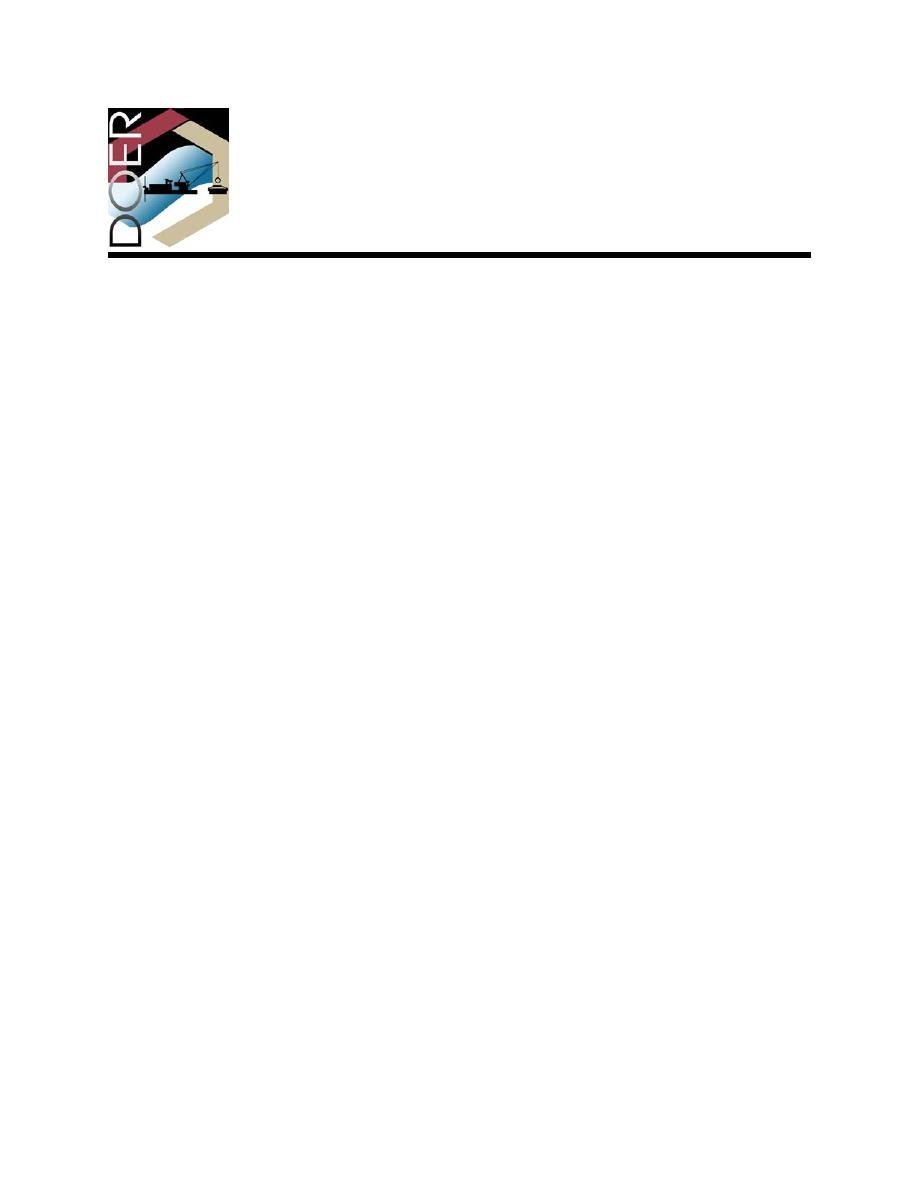 |
||
|
|
||
|
Page Title:
Liner Design Guidance for Confined Disposal Facility Leachate Control |
||
| |||||||||||||||
|
|
 ERDC TN-DOER-R6
December 2004
Liner Design Guidance for Confined
Disposal Facility Leachate Control
PURPOSE: This technical note provides design guidance for liners used to reduce the release of
contaminants from confined disposal facilities (CDFs) containing contaminated dredged materials.
Design requirements, geotechnical considerations, material selection, required thickness, construction,
quality control, and monitoring are included. References to detailed design procedures are also given.
This technical note is intended for use by USACE personnel and federal and state regulatory agency
personnel, as well as dredging permit applicants and others.
BACKGROUND: A CDF is an engineered structure designed to provide the required storage volume
for dredged material and to meet the required suspended solids concentration in effluent released from the
facility. Procedures for design of CDFs for storage volume and for suspended solids retention are
provided in Engineer Manual 1110-2-5027 (U.S. Army Corps of Engineers (USACE) 1987). A CDF may
be constructed as an upland site, as a nearshore site with one or more sides exposed to the water, or as an
island containment area. The joint USACE and U.S. Environmental Protection Agency (USEPA)
document "Evaluating Environmental Effects of Dredged Material Management Alternatives--A
Technical Framework" (USEPA/USACE 2004) provides guidance for selecting an appropriate dredged
material disposal alternative. "Evaluation of Dredged Material Proposed for Disposal at Island,
Nearshore, or Upland Confined Disposal Facilities Testing Manual" (USACE 2003) further provides
procedures for identifying contaminant loss pathways (Figure 1) requiring control measures necessary for
any disposal alternative. Leachate is one of the pathways shown in Figure 1.
LEACHATE PATHWAY: Leachate is a liquid generated by movement of water through contaminated
materials. It can be produced by several potential sources: gravity drainage of the original pore water and
ponded water, inflow of groundwater, and infiltration of rainwater and snowmelt. Leachate generation
and transport in a CDF thus depend on many site-specific and sediment-specific factors. Immediately
after dredging and disposal, dredged material is saturated (all voids are filled with water). As evaporation
and seepage remove water from the voids, the amount of water stored and available for gravity drainage
decreases. Since contaminants in dredged material are primarily adsorbed to sediment particles, leaching
by percolating site water from a CDF situated above the groundwater table is the primary mechanism by
which contaminant migration to groundwater takes place. If the site is situated so that groundwater will
flow through the material (typically, a nearshore CDF), percolating groundwater flow may be the primary
source of water through the material. If the CDF is a nearshore or island facility, surface water may also
be in contact with the dredged material as a result of fluctuating water levels and may transport
contaminants from the CDF in a process termed tidal or wave flushing. This technical note focuses on
upland CDFs.
DESIGN CONSIDERATIONS FOR LINERS: Liner systems function to minimize contaminant
release into the environment by controlling leachate pathways. Liners not only serve to physically isolate
the sediments from lateral dikes and foundation materials, but they also function to reduce contaminant
migration by employing low-permeability materials to retard the passage of water that may contain
contaminants. The overall performance of the liner system is evaluated by monitoring whether or not the
liner meets specific performance objectives, including its ability to meet groundwater contaminant
standards at designated points of compliance.
1
|
|
Privacy Statement - Press Release - Copyright Information. - Contact Us - Support Integrated Publishing |